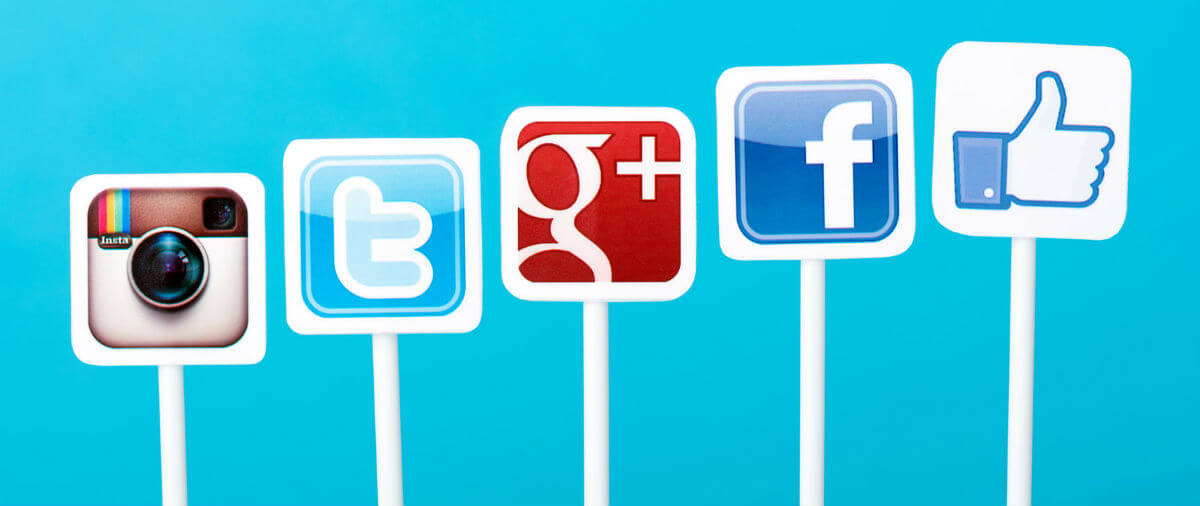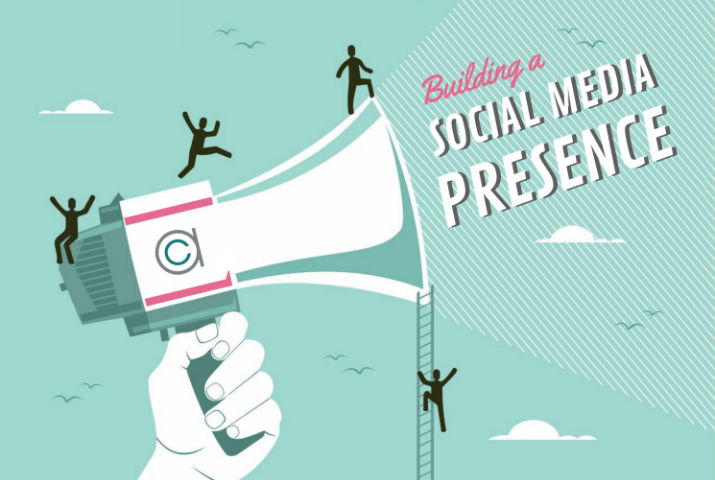With 350 million Twitter users, 2 billion on Facebook and 500 million LinkedIn accounts, it’s safe to say that social media is a powerful tool for business as well as personal use. Despite this, there are small and medium-sized enterprises (SMEs) who are unsure of its importance.
We’re here to tell you that, on the contrary, using social media can be the making of your organisation, increasing engagement, sales and productivity. Let’s look at the benefits…
What is social media?
Described as “computer mediated tools that allow people, companies and other organisations to create, share or exchange information,” social media is an ever-more important tool in a world that relies upon and uses digital tools.
It can help companies increase traffic to their website, which means more people are aware of the business.
Here at Agency Central, we place a great deal of value in platforms such as Twitter, LinkedIn and Facebook. All of these can increase awareness of your company and brand.
Effect of social media
There can be no doubt that embracing social media represents a leap into the unknown for many SMEs who have tight profit margins, or may see themselves as successful anyway. However, looking at the opinions of similar-sized businesses should alleviate any fears and uncertainties.
Over the past year, Experian’s research points strongly to the opinion that SMEs benefit from social media.
The biggest benefit of having an online presence in 2014 and 2015 was being able to reach a wider geographical audience.
Their December article about the statistics behind social media for SMEs revealed that 84% use social media to reach customers, while over half know their customers expect them to be on such platforms.
The fact 58% spend time on social media marketing for at least 10 minutes a day shows that businesses know its importance, if not always the best way to utilise such sites to optimise profits.
Tellingly, 80% of SMEs plan to increase social media usage over the next year.
Importance of online presence
Experian’s research clearly shows a real need for an online presence. It could make or break a company and is particularly the case for smaller enterprises.
Their research suggests 76% of British adults use the internet every day.
According to the Department of Business, Innovation and Skills, up to two million small firms have no online presence, at a time that “small business owners now have an array of options when it comes to raising awareness of their company.”
Tellingly, 80% of SMEs plan to increase usage over the next year.
The Experian article says that this lack of online presence is one of the biggest reasons why start-ups fail. It is hardly surprising when you consider the exposure a business can gain. It goes on to state that many established SMEs are not ‘digital ready’, therefore missing out on vital marketing opportunities.
Add to this the fact that the biggest benefit of having an online presence in 2014 and 2015 was being able to reach a wider geographical audience, and it is clear that using social media is a must for SMEs.
Benefits of social media to SMEs
Interaction
How do you communicate with your customers? You have a phone number and email address? That’s great. But how can you ensure quicker interaction? Social media of course. Bear in mind, the likelihood is your competitor will be in touch with customers in this way. Do you want them to have access that you do not?
Social media can improve your access.
The various platforms allow SMEs to not only speak to prospective and established customers directly, but also they can establish a company voice and tone that is at the heart of whatever they want to promote.
A survey from Constant Contact, published after collating the findings from 2,000 SMEs showed that 60% found Twitter an effective platform to connect with customers, while 81% said they use social media to market their business.
An article from Moore & Smalley puts it more succinctly, describing social media as “a method of connection, sharing and engagement with customers, clients, investors and beyond.”
Platforms such as Twitter and LinkedIn can reach out to customers and businesses alike. Crucially, enquiries have a better chance of reaching the right people better than traditional methods – a point made by Melissa Lang at Datrix, which is an online training course provider.
According to the Department of Business, Innovation and Skills, up to two million small firms have no online presence.
She said: “The benefit of using Twitter is that it is quick and when doing B2B marketing, our enquiry will often go to the right person, first time. Twitter is a great platform for engaging with potential customers.”
By having the likes of Twitter, you are much more accessible to a customer and their needs, and you can cultivate the tone of your business through the tweets.
Another important aspect of this is the person dealing with any request through social media. Note the crucial part of the last sentence – person. People like to deal with people, not organisations. By having a Twitter account, you’re giving your company a face and a name. This is important interaction and also matters when gaining trust.
An interesting aspect about trust is raised by Jamie Bell at yoursocialmediaguide.co.uk. He describes social media as “an essential resource”. He also makes the very valid point that by opening up your company to these platforms, the response you give to criticisms that can be seen, as well as praise, can result in the trust of potential new customers.
“Social media has become a source of trust for prospective customers as any praise or complaint given to a company on social media is available for all to see.”

Sales and advertising
The way a business advertises its services has changed since the explosion of social media.
Techniques such as meetings and telephone calls are clearly still of use but there are so many other avenues that can be explored by simply having an online presence.
Having social media accounts gives customers the opportunity to directly contact the exact person to help with a query or complaint.
It is no different if the tables are turned. By using Twitter or LinkedIn, direct contact with potential customers is possible – meaning sales or advertising can be targeted towards the relevant people.
The benefit of using Twitter is that it is quick and when doing B2B marketing, our enquiry will often go to the right person, first time. Twitter is a great platform for engaging with potential customers.
Annmarie Hanlon from the Worshipful Company of Marketors, told us that social media can help to transform sales and advertising activity.
“Advertising via social media means tracking every move the customer makes, as well as targets customers with laser precision. You can select a specific audience.”
Unlike printed publications, Annmarie also says that sales generated from individual advertising can be tracked.
“Every sale as a result of placing an advert via social media can be tracked. Whether that day, the following day or six months later. Each and every sale can be attributed to a specific advert on a specific social media platform.”
This means SMEs will automatically know which advertisements are working, and can tailor future campaigns to suit what is successful.
Social media has become a source of trust for prospective customers as any praise or complaint given to a company on social media is available for all to see.
It is cheap and increases traffic
Of course, how could we forget?! The glaring benefit to using social media is it is FREE. All of Twitter, LinkedIn, Facebook, Pinterest, Instagram do not demand registration fees. In the case of LinkedIn, there are account options that require subscription, but they are entirely optional.
Importantly, the free options cater for the needs of a business. Making sure that the tools are used correctly is key.
It’s worth pointing out however, that Facebook has facilitated a recent change that will prioritize posts in newsfeeds that are published by individual users, rather than brands and organisations. The result, according to an article in Forbes, will be disruption to “a number of content distribution campaigns, and makes the value of syndicating on Facebook much lower – unless you want to pay for that syndication.”
The aim, it seems, is to increase paid advertising on the site. Although this is not every company’s idea of business, at this present time, it doesn’t represent a huge expenditure.
How to get content to go viral
Sending out tweets and LinkedIn updates can greatly improve brand awareness. The creation of shareable content is a vital component of this.
By sharing quality content on your social media, your business not only looks professional, but trustworthy.
By producing content, it not only directs people – whether they are customers or not – to your site, it emphasises you as a brand and encourages engagement with the audience.
Melissa Lang at Datrix believes there is a benefit to sharing blog posts via social media.
“On site blogging can be a great way of advertising your business, however getting traffic there can be the problem. By sharing quality content on your social media, your business not only looks professional, but trustworthy.”
Invariably, this solves the conundrum of getting traffic to your website.
Sharing quality articles, reviews, videos, webinars and podcasts will all result in added traffic to your site, while improving the awareness of your brand.
Even tailoring publication times of information by scheduling updates on social media sites can provide massive benefits – and all of this is achievable without huge expenditure.
Conclusion
With benefits such as improved sales, greater interaction, brand awareness which ultimately make a business more successful, social media is a resource that SMEs should tap into.
Of course, it is important to use these platforms correctly – there are organisations out there who specialise in this – but doing so can only be beneficial to the future of the SMEs that embrace social media.
As well as the platforms mentioned throughout, we’ll shortly be exploring the benefits that Instagram and Snapchat can bring to a company. Stay tuned!



